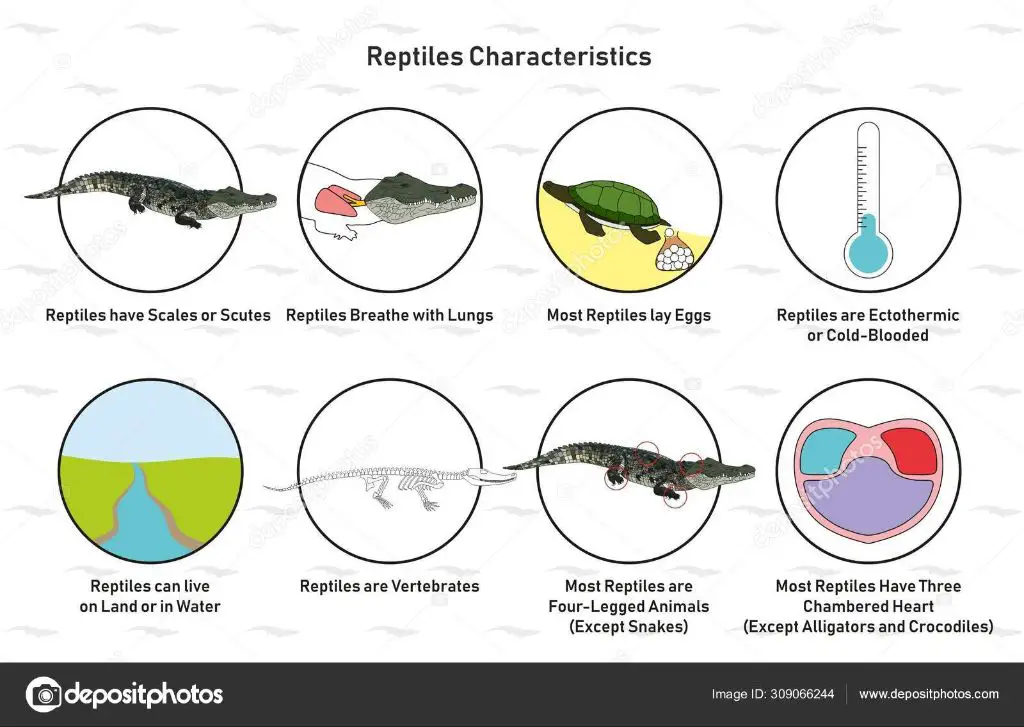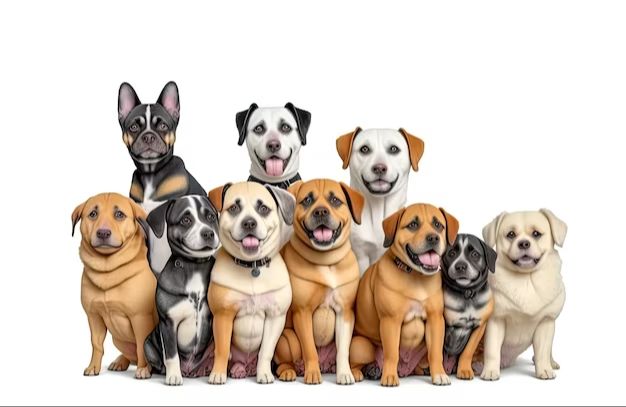Introduction
There are two main types of warm-blooded animals with backbones: mammals and reptiles. However, there has long been some confusion about which category dogs belong to. While dogs certainly seem like mammals at first glance, some of their features have led people to question whether they might actually be reptiles. This article will clarify the distinction between mammals and reptiles, explain why there is confusion around dogs, and confirm that dogs are indeed mammals despite some of their unusual traits.
Defining Mammals
Scientifically, mammals are defined as vertebrate animals that have three middle ear bones, are endothermic (warm-blooded), have hair, produce milk through mammary glands to feed their young, and typically give live birth. Mammals are a diverse class of animals that include over 6,000 species, ranging from aquatic mammals like whales and dolphins to flying mammals like bats.
Some of the key characteristics that distinguish mammals from other animal classes like reptiles, birds, fish, and amphibians include:
- They are endothermic, meaning they can regulate their own body temperature to maintain a constant internal temperature despite changes in the external environment.
- They have hair or fur covering their skin, which provides insulation to retain body heat.
- The females produce milk from mammary glands to nourish their young after birth.
- They give live birth to their young, as opposed to laying eggs.
- They have three middle ear bones called the malleus, incus, and stapes that transmit sound vibrations.
These key mammalian traits separate them from all other animal groups and provide the scientific basis that defines mammals.

Defining Reptiles
Scientifically, reptiles are defined as cold-blooded vertebrates that have scales on their skin and typically lay soft-shelled eggs. Some key characteristics of reptiles include:
- Ectothermic – Reptiles rely on external sources like the sun to regulate their body temperature. They are “cold-blooded.”
- Scales – Reptile skin is covered in tough, dry scales made of keratin. This helps retain moisture and provide protection.
- Eggs – Most reptiles lay soft-shelled leathery eggs rather than giving live birth to young. The eggs are often left in warm, moist locations to incubate.
- Land dwellers – While some reptiles live in water, most reptiles live on land or divide time between land and water.
- Vertebrates – Reptiles have a spinal column and internal skeleton like other vertebrates including mammals and birds.
These characteristics help distinguish reptiles from other animal classes like mammals, birds, fish and amphibians.

Comparing Mammals and Reptiles
Mammals and reptiles belong to different taxonomic classes with key differences in their biology. Here is an overview comparing some of the main traits of mammals versus reptiles:
| Trait | Mammals | Reptiles |
|---|---|---|
| Body Temperature | Warm-blooded; maintain internal body temperature | Cold-blooded; body temperature varies with external temperature |
| Skin | Hair and fur | Dry, scaly skin |
| Reproduction | Give live birth to young | Lay eggs that hatch outside the body |
| Offspring Care | Nourish young with milk; extended parental care | No milk; little to no care after eggs are laid |
As evident in the table, mammals and reptiles have very different biological features, particularly when it comes to their metabolism, appearance, and reproduction. Mammals are warm-blooded with hair and fur. They give live birth to young and nourish them with milk from the mother. In contrast, reptiles are cold-blooded with scaly skin. They lay eggs that hatch outside the body and provide little to no parental care.
Dogs are Mammals
All evidence clearly shows that dogs are mammals. As mammals, dogs have the following defining features:
- They are warm-blooded, maintaining a constant internal body temperature.
- They have fur covering their entire bodies.
- Female dogs produce milk to nurse their young.
- Dogs do not lay eggs. Instead, they give birth to live young.
These mammalian traits set dogs apart from reptiles, which are cold-blooded, have scales rather than fur, do not produce milk, and lay eggs rather than giving live birth. While dogs may have some superficial similarities to certain reptiles, they meet all the criteria that classify them definitively as mammals rather than reptiles.

Why the Confusion?
Despite dogs clearly being mammals, there are a few reasons why some people mistakenly think they are reptiles:
Ancestry: Dogs are descended from wolves, which are mammals. However, some of the physical traits dogs developed through domestication give them a superficial resemblance to reptiles. Their hairless bodies, elongated snouts, and long tails resemble features found in reptiles.
Appearances: Some dog breeds have physical characteristics that may seem “reptile-like”, such as hairless skin, green eyes, pointy ears, or wrinkly skin. These unique looks lead some people to incorrectly associate them with reptiles.
Behaviors: Dogs that dig burrows, lay in the sun, or hunt small animals may trigger perceptions of reptile tendencies. However, these instincts are simply leftover traits from their wild ancestors.
Myths & Misconceptions: Fictional depictions of dog-like reptiles, as well as some common misconceptions about reptiles vs. mammals, cause misguided assumptions that dogs are reptiles.
While these factors may explain the source of the confusion, dogs remain placental mammals that share none of the key biological traits of reptiles.
Dogs’ Mammalian Ancestry
Dogs belong to the biological order Carnivora, which includes mammals like wolves, foxes, big cats, bears, seals and others. The earliest carnivoran ancestors emerged around 42 million years ago during the Eocene epoch.
These primitive carnivorans diverged into two main branches about 40 million years ago – the cats (Feliformia) and the dogs (Caniformia). Dogs share a more recent common ancestor with animals like bears, raccoons, weasels, and seals.
The earliest dog-like fossils are found in rock sediments from about 36 million years ago. These ancient animals were small tree-climbing creatures that still retained some primate-like features from earlier ancestors.
Over millions of years, these proto-dogs evolved into larger ground-dwelling hunters better adapted to chasing prey over long distances. They diversified into wolves, coyotes, jackals and the first primitive domestic dog species.
So while dogs today might look quite different from other mammals, their ancestral lineage clearly harkens back to small mammal-like creatures from the late Eocene epoch.
Unique Dog Features
Dogs have several unique features that set them apart from other mammals:
-
Barking: Dogs are known for their distinctive barking sounds. While some other mammals make various cries or howls, repetitively barking is a unique form of vocalization for dogs.
-
Wagging tails: Dogs expressively wag their tails to communicate their mood and emotions. Continuous tail wagging is unique to dogs compared to other mammals like cats.
-
Pack mentality: Dogs evolved to live and hunt in coordinated packs. This gives them strong social instincts to form bonded “packs” with human families. Other solitary mammals do not form the same tight-knit bonds.
-
Trainability: Dogs are eager to please and exceptionally trainable compared to other mammals like cats. Their pack mentality makes them very responsive to human commands and positive reinforcement.
-
Physical diversity: Dogs come in a huge range of sizes, colors, shapes thanks to extensive human-guided breeding. Few other mammals have such physical diversity within the same species.
These unique adaptations and behaviors set dogs apart from other canines and most other mammals as well. They make the dog a uniquely endearing, communicative, and trainable companion animal for humans.

Conclusion
Throughout this article, we have reviewed multiple lines of evidence showing that dogs are classified within the mammalian class, not the reptilian class. Key points include:
- Mammals are warm-blooded vertebrates that birth live young, produce milk, and have hair and mammary glands. Dogs exhibit all of these traits.
- Reptiles are cold-blooded vertebrates that lay eggs, have scales, and breathe through lungs. Dogs share none of these reptilian characteristics.
- The ancestral lineage of all dogs traces back to gray wolves, an undeniably mammalian species that belongs to the canid biological family.
- While some dogs may exhibit physical traits that seem “reptilian”, like hairless skin or a long body, these are the result of selective breeding and do not indicate an ancestral relationship to reptiles.
- Genetic and fossil evidence firmly establishes dogs within the mammalian class of the animal kingdom, alongside other mammals like bears, cats, humans, and whales.
In summary, despite some superficial similarities, dogs match the mammalian blueprint in every way, from their physiology and reproduction to their genetics and evolutionary origins. No credible scientific evidence suggests dogs are anything other than mammals. While the confusion is understandable, rest assured your furry canine companion is 100% mammal.
References
Dogs belong to the taxonomic family Canidae and are carnivorous mammals of the order Carnivora. According to the Integrated Taxonomic Information System (ITIS), the domestic dog was classified as Canis familiaris by Carolus Linnaeus in 1758.
Mammals are warm-blooded vertebrates that have hair and mammary glands. Reptiles are cold-blooded vertebrates that have scaly skin. According to the Encyclopedia Britannica, mammals breathe air, are endothermic, and have a four-chambered heart. Reptiles breathe air, are ectothermic, and have a three-chambered heart.
According to a 2020 study published in Nature, dogs and wolves evolved from a common ancestor between 20,000 and 40,000 years ago. Dogs are believed to be the first animals domesticated by humans. Through selective breeding, humans shaped the physical features of dogs over thousands of years.
Despite their mammalian ancestry, some dogs have physical traits more reminiscent of reptiles. For example, the Chinese Crested breed and the Xoloitzcuintli (Mexican Hairless Dog) have hairless skin. The Shar Pei breed has excessive wrinkly skin resembling reptile scales. However, these are superficial traits and do not change dogs’ underlying mammalian physiology.